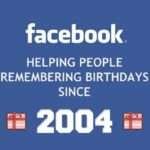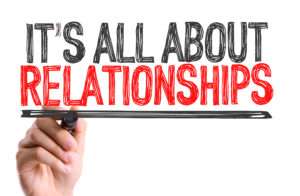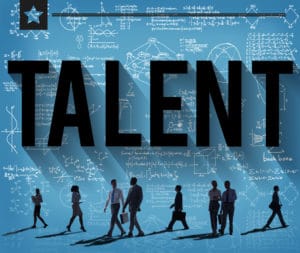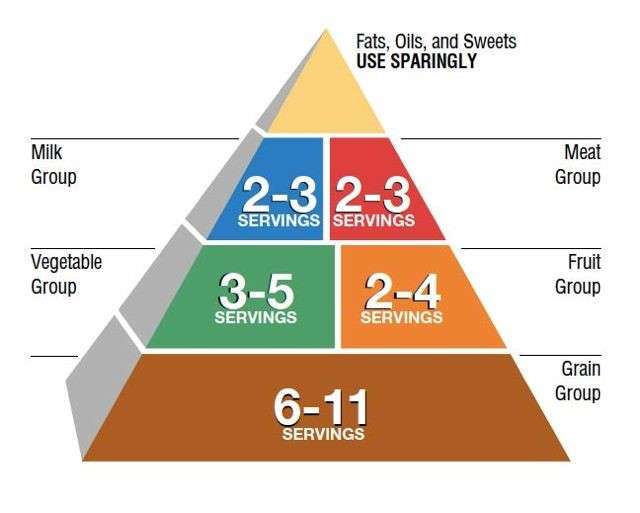by Adam L Stanley | Mar 29, 2018 | Technology
The Big-D Jargon Hit list: Cutting out Disintermediation
Purging overused buzzwords opens our minds to the new realities of succeeding in business today
If you’ve been following any of my blogs lately you’ll know that I’ve been on a rant about jargon, and, so far, have tried to exorcise both digital and disruption from our daily lexicon. Good luck, you say? Ok, well, the point I’m trying to make is that many of these words have gone past their due dates, and should be sent out to the business-as-usual pasture.
Generally, the rampant use of jargon isn’t only annoying, it blocks our ability to see with fresh eyes and stifles the way we communicate. Even worse, such words, often coined by consultants, can cause us to cram our great plans into safe, universally-defined small boxes. So much for thinking “outside of the box!”
Jargon gets on everyone’s nerves, yet, we all use it because it’s easy and everyone else is doing it. When you take overused words out of the equation, you’ll find that you’ll look at things differently and be more focused. Suddenly those meetings won’t be such a waste of time and you and your team will have a better chance at refocusing on what matters: delivering ever-better services to your clients and growing your business.

And if you don’t believe me, take the jargon-lite challenge; go a few days without using digital or disruption or any other buzzwords for that matter and see how it challenges your thought processes.
Ok – for this blog installment, I’d like to take on a longer “d” word that’s also polluting our lexicon: Disintermediation. What? I get that this isn’t a word you commonly toss around over a drink with your pals, but it’s one that consultants love and looms large over many businesses today.
Disintermediation would really be the removal of the go-between in business transactions, reducing the “friction” in a transaction and, at least in theory, improving the value of an existing product or service. Inversely, intermediation injects a middleman between distribution channels e.g. a customer and businesses that previously sold directly to consumers.
Where I work at a brokerage, disintermediation is a big topic. Stock brokers, residential real estate brokers, and insurance agents are all intermediaries, and constantly wonder how new concepts will impact their value. “Will brokerages be disintermediated?” is a constant question at industry tech events.
Ok, stick with me on this one – it’s a bit of a reductio ad absurdum argument. Disintermediation assumes that a there is a recognized, consistent intermediary that provides services to a recognized, consistent channel. But with channels changing frequently in a digital world where disruption occurs regularly is there, in fact, a recognized consistent intermediary?
Insurance brokerage, for example, has changed but it isn’t really about disintermediation. The channel is still the same: a customer looking for insurance who goes to a “source” to help them get what they need. What has changed is that that source is no longer only a person but also a website or a mobile application.
For businesses today, the idea of threat of disintermediation is negative and potentially limiting. In this world, one size does not fit all. New models must be free of narrowly defined concepts and, instead, focus harder on understanding their customer base. We must find new ways to meet needs with improved levels of convenience and selection. It’s not about disintermediation, it’s about the realities of doing business today.
So, let’s stop talking about disintermediation. Instead, here is what your meetings should cover:
- Who are my customers, and what do they need? Not just which of my existing services do my customers need.
- What are the most important relationship factors desired by my customers in a partnership?
- How do my customers access their needs today and what factors (environmental, demographics, etc.) may influence these buying patterns in the future?
- Are we willing to change the way we deliver services even if that means we lose good people or abandon successful products?
Netflix did not disintermediate Blockbuster. Customers have always wanted entertainment. They want convenience and enjoy watching movies wherever, whenever, and on whatever device they want. Netflix did not disintermediate Blockbuster. Netflix recognized the channel was changing and became an intermediary of that channel.
I’ve now covered digital, disruption and disintermediation in my Big D Hit List. I would love to have your thoughts on this post.
Adam

Adam L. Stanley Connections Blog
Technology. Leadership. Food. Life.
AdamLStanley.com (Driving Value)
Follow me on Twitter | Connect with me on Linked In | “Like” me on Facebook

by Adam L Stanley | Feb 21, 2017 | Leadership, Life, Relationships
“Too often, companies fail to cultivate relationships with key decision-makers until a crisis hits, at which point it’s too late. Know the cell phone numbers of such people so that you can call them on Sunday night in real time, not after the fact on Monday morning.”
— Jaap de Hoop Scheffer, Former Secretary-General, NATO
Make friends before you need them
I guess this is the easiest way I can say this: you either want a life connection or you don’t.
I wouldn’t say that I’m a “networker” per se, although some people observing me might think I am. Rather, I like to forge long-term connections with people around shared interests — and only some of the time is that standard business. Much more of the time, it’s food, wine, theater, technology, or other passions. Hopefully, you have read my blog on this topic: Aim for life connections instead of networking.

The thing that bothers me in any discussion about relationship-building or standard networking is that often, the lesson seems to be that you connect with people when you need them. I disagree. I don’t want to be called when you need me if you had no interest before that. You either want the life connection or you don’t. It’s not contextual to “I need something now.”
The executive recruiter who placed me in my current role is the same recruiter who placed me in my role at Aon several years ago. He periodically checked in on me and had set a recurring event on his calendar marking the anniversary of my Aon start date. Just over three years ago, he reached out to me on this anniversary and we arranged a breakfast. That breakfast led to the introduction to, and unlikely connection with, my current company. It came as a result of a life connection – a relationship – not because I was looking for a role.
I have other recruiters in my “network” who call and email aggressively when they are trying to fill a role, yet never reach out in between. And how many emails do I get from people who worked for me years ago saying something like “Hi, I know it has been years since we have spoken but I am now looking for a job. Can you help?”
Or how about those family members or friends who don’t reach out to you for years, then one day, ask for money or favors? It happens far too often. Thus, my rant.
Make friends before you need them.
People want to feel needed and loved all the time, and not simply when you want their help or need something. And by “people,” I would definitely include myself.
But how do you do this? Here are a few tips.
Always use social media cheats.
Facebook and LinkedIn remind you of special occasions and make it very easy to say happy birthday or congrats to peeps in your circle. Use them. This is a great, quick way to say hello and it keeps your name fresh in their minds.  Use the “you might know” feature too. Every social platform has a variation of this. It turns out that your high school football teammate married someone who works at a company you admire. Reach out immediately. Don’t wait until you decide to pursue a job at that company. By that point, it’s too late.
Use the “you might know” feature too. Every social platform has a variation of this. It turns out that your high school football teammate married someone who works at a company you admire. Reach out immediately. Don’t wait until you decide to pursue a job at that company. By that point, it’s too late.
Buy stamps and custom note cards and use them.
I bought each of my nieces and my nephew 36 thank you notes and urged them to use them throughout the year. That is less than one personal note each week but likely about 34 more than they sent last year. Email is easy and crowded. Online billing and electronic advertising have resulted in snail mail being predominantly political crap and charities. Take advantage of the gap and send a personal card. The average white collar professional gets 120+ emails per day; often it feels like more than that. Email gets lost. A card will not and will ultimately mean more than a few email lines or something on Facebook.

Pick up the phone instead of flipping your middle finger.
Commuting is not fun. More than half of Americans spend at least 40 minutes in their round-trip commute. Nobel laureate Daniel Kahneman and his team found that people find as much happiness in commuting as they do in housework. That pretty much means that the commute stinks.
Do you have to drive everyday and often get stuck in traffic? Use that time for calls NOT related to work. Talking work AND dealing with stress, unless you REALLY like your job, will increase likelihood of road rage. Call someone funny that you haven’t heard from in years. Call the woman you heard started an amazing company this year. Call your allegedly best friend you have likely only touched via texts for at least a week. If you are on a train for your commute, commit to handwriting a note or sending an email to someone with whom you have not connected in 6 months.
Say yes more.
Saying yes to more opportunities opens up a world of new life connections, allowing you to expand your world beyond the immediate circle. While sometimes this may mean going beyond that with which you are normally comfortable, it will open you up to more people who you may be able to help and who may be able to help you. Plus, it helps you live a more optimal life.
Go to those reunions. Accept random coffee requests. Return the call of those headhunters and agree to exploratory interviews. Think about how many work events you go to because you feel you have to. Make at least a similar amount of time available for yoga, small venue concerts, and that pottery class you considered twenty years ago. Actually talk to the parents waiting with you when you pick up your kids from school or attend the soccer match.
Taking a risk and doing something different can be both liberating and empowering. If you normally hesitate when asked, for example, to volunteer for something, saying yes might lead to rewarding personal and professional results today and later on when you need help.
Maintain an events and occasions calendar.
This can be especially relevant if you change jobs frequently. Use Google or a private email server for this given birthdays are for life. Record special dates of coworkers, former coworkers or cool people you meet. Don’t be creepy, but sending a note that says “Hey. Just realized the annual blah Blah blah event is coming up. It was such a pleasure sitting at the table with you and Sally last year I thought I would reach out to see if you were attending this year. Want to join me again?” Simple and not creepy.
Call someone today.
When a job comes up or there’s a chance to start a new company or any other opportunity is “public,” it’s already too late. The core people are already known and in the system contextually. When you need help, or are in the midst of a crisis, it is so much harder to find help in the moment. If you want to be one of those core people for any opportunity, or to be able to connect with help in a crisis, you absolutely need to make friends before you need them.
Be well. Lead On.
Adam

Adam L. Stanley Connections Blog
Technology. Leadership. Food. Life.
AdamLStanley.com
Follow me on Twitter | Connect with me on Linked In | “Like” me on Facebook
Related Posts:
Change while times are good
Aim for life connections instead of networking

by Adam L Stanley | Dec 31, 2016 | Life
Good riddance 2016!
The last year that stunk as much as this year was 2010. That was the year my step-dad died. My work got really stressful for a few reasons I will not share here. There was a horrific earthquake in Haiti and a tragic disaster with the BP oil spill. My TV favorite actors from The Golden Girls, Different Strokes, Dynasty, and Designing Women died. I wasted two hours watching the astoundingly awful “Grown Ups” with Adam Sandler that I can never get back. And politics started getting really nasty in America.
Well, this year, lovely 2016, is going down in such a way as to make that year look like roses. Work was great albeit there were tons of challenges and complex problems. My family had a great year. We lost my aunt and had some health challenges but were able to celebrate a few weddings, births, and graduations and other fun events that made Family Life more joyful in 2016.
2016: Worst Year?
Outside of family and work life however, it was a true shitshow of a year. My idols started to drop: Prince, David Bowie, George Michael, Alan Thicke, Natalie Cole, Mohammed Ali… Professor Snape. Come on!! I recently looked at the list of famous people who called it quits this year. Shocking. Like they were desperate to leave before ….
Which brings me to that other big thing that happened this year…. The election. What a season. Great for Saturday Night Live, Alec Baldwin as The Donald was almost as funny as Tina Fey as Sarah Palin. With SEVENTEEN candidates, it was bound to produce ample material. Sadly, 2016 also became the year where it seems the country stopped laughing. Hatred. Mistrust. Anger. So much Negativity.
There were multiple mass murders in 2016. Including ones that truly hurt me more than I would have imagined. Considering myself in my younger days traveling for work and occasionally visiting nightclubs or bars in the cities in which I worked. And pondering what if an insane, conflicted, homicidal man had come to one of those clubs and killed almost fifty innocent people. (#Pulse) Picturing walking the streets of Paris and the Christmas markets I experienced in Hamburg as I remember with horror hearing about the Nice and Berlin truck murders.
Zika! Brexit! Syria! Brangelina! Police shootings! Police ambushes! Yes, 2016, you sucked.
And Chicago…. I. Just. Can’t. So many young children dying from senseless gang violence. High taxes and troubled schools. Politicians in and out of jail. And so many closed minds!
To be honest, I’m not actually wanting to say goodbye to 2016 as much as I’m saying good riddance. Good riddance to the hate and the nastiness. Good riddance to the racism on all sides. Good riddance to feeling forced to choose sides between two outrageously flawed individuals, between rich and poor, black and white, LGBT or “straight”, Muslim and Christian. And good riddance to the hatred that resulted in so many deaths of innocent people. Good riddance to the steady stream of news of my favorite TV and music stars passing.

2017. I welcome you with renewed focus on showing love and compassion. I anxiously await more phone calls to and from friends. I pray that peace will prevail SOMEWHERE. I am hopeful that the worst is behind us and the best is yet to come. And regardless of whether I’m proven right or massively wrong, I will still never compromise my values. I will choose love over hate. And I will live each day as if it’s my last. That’s what really matters.
As always, I will not write a New Years Resolution, though I do hope to shed a few pounds and get more sleep in 2017 (most would say that is more of a necessity than a resolutional goal). However, I will suggest that we try to work together to make 2017 more forgiving, more loving, and more joyful than 2016. And I could find no one better (with the exception of Jesus) to give us the words to live by as we move into the New Year than the woman who was canonized into sainthood this year, Mother Theresa.

I love you each, specially, for whatever role you play in our world. You BE you and do it as GOOD as you can. Your life matters.
Be well. Lead On.
Adam
Related Posts:
Who Am I?
2015>2016: My Personal Ten Commandments
2014>2015: A new year resolution you can keep
Is 2016 the worst year in history? Worse than 1919? 1836? 1348? via @slate

Adam L. Stanley Connections Blog
Technology. Leadership. Food. Life.
AdamLStanley.com
Follow me on Twitter | Connect with me on Linked In | “Like” me on Facebook


by Adam L Stanley | Oct 24, 2016 | Leadership, Technology
Technology leaders must think like Disruptors
A decade ago, the five most valuable companies on the S&P 500 were Exxon, GE, Microsoft, Gazprom, and Citigroup. Now? It’s Apple, Alphabet (Google), Amazon, Microsoft, and Facebook. Things change. And they change fast. And many technology leaders are not ready for it. In some ways, none of us are.
Amazon is maybe the ultimate disruptive company; it essentially ushered along a completely new way of thinking about commerce. But interestingly, before Amazon started there was another disrupter called Webvan. In 1999, myself and a group of fellow Wharton MBA students in an e-commerce course won a prize in a contest sponsored by Salomon Smith Barney. (There are so many elements of irony in this but I will save that for another blog.) Our topic? Webvan vs Albertsons: How e-commerce will disrupt brick and mortar grocers. Our conclusion was that the bricks would always be around to some extent but that everyone would become more comfortable with buying groceries online thanks to Webvan. We were right about some of that! More important at the time is that the now defunct brand sponsored our $1000 per team member prize!

 Perhaps the ultimate success of Amazon is the fact they learned from the mistakes of their Webvan predecessor. Webvan is the best example of a company that tried and failed at a bold attempt to disrupt a stodgy industry. It raised $375 million in its IPO, achieved a peak stock market value of $1.2 billion, then flamed out spectacularly before filing for bankruptcy in July 2001.
Perhaps the ultimate success of Amazon is the fact they learned from the mistakes of their Webvan predecessor. Webvan is the best example of a company that tried and failed at a bold attempt to disrupt a stodgy industry. It raised $375 million in its IPO, achieved a peak stock market value of $1.2 billion, then flamed out spectacularly before filing for bankruptcy in July 2001.
Facebook completely disrupted how we think about relationships and staying connected to friends and family. But before them there was MySpace. Google and Apple, in their own ways, did the same for accessing and sharing information. But they borrowed heavily from the playbooks, both winning and losing games, of Alta Vista, BlackBerry, and Apple 1.0 (remember Jobs was fired by Apple?)
 In my career, I’ve met plenty of leaders and managers — up through the executive level — who absolutely think disruption isn’t real, or won’t come for them. And I have met several techies and startup guys who are on their 10th attempt and think everything is ripe for disruption. They are both wrong to some extent. There are some industries that are just begging to be disrupted: real estate title companies and public education come to mind (sorry if the latter offends).There are certain industries that would be a little bit harder to disrupt. Airlines come to mind, because the cost of entry is massive. But … you could argue Southwest disrupted the airline industry to some extent. Their stock is still mostly hot, too.
In my career, I’ve met plenty of leaders and managers — up through the executive level — who absolutely think disruption isn’t real, or won’t come for them. And I have met several techies and startup guys who are on their 10th attempt and think everything is ripe for disruption. They are both wrong to some extent. There are some industries that are just begging to be disrupted: real estate title companies and public education come to mind (sorry if the latter offends).There are certain industries that would be a little bit harder to disrupt. Airlines come to mind, because the cost of entry is massive. But … you could argue Southwest disrupted the airline industry to some extent. Their stock is still mostly hot, too.
The reality is that anything CAN be disrupted. Mind blowing statistic for amateur corporate historians: 88% of the 1955 Fortune 500 doesn’t exist anymore. You can argue that 1955 was a long time ago and business models are obviously very different, and you’d be right — but you’d also be proving my point. To quote Varsity Blues, a B-movie that came out right around the time Webvan was imploding: “Things change, Mox.” We’re all candidates for disruption to some extent.
That is going to require a new way for technology leaders, CIOs, CTOs, and others with decision-making oversight to approach their day-to-day jobs. What might that look like? Here are six ways I see it shifting.
Scenario planning: We will constantly prepare for disruption or downturns by thinking through our potential reaction to certain market events. We’ve ideally been doing this for years, but too many CIOs are still spending part of their supposedly strategic time just putting out fires.
New business models. We must continue building a closer relationship with the business units. We can’t be seen as “IT” or “infrastructure.” It needs to be baked in. My current team is talking to as many external clients as we can, along with our colleagues, so that we better understand demand. We must continue to think about new ways of working and new business models for delivering services.
 Experimentation. We must be comfortable with taking risks and failing fast. We must try out new things and not be afraid of the possibility of experimenting and throwing away. The best unicorns started off as 10, 20, 30, or 150 failed ideas. If you want a good read on making (tons of) money despite massive failure at some points in the past, check this out from HBR.
Experimentation. We must be comfortable with taking risks and failing fast. We must try out new things and not be afraid of the possibility of experimenting and throwing away. The best unicorns started off as 10, 20, 30, or 150 failed ideas. If you want a good read on making (tons of) money despite massive failure at some points in the past, check this out from HBR.
New org model. We must cease the “us” versus “them” thinking that has corporate IT and the business operating as separate entities. We are partners driving value. It’s that simple. I disdain the use of the word “The Business” as “Clients” of IT. We are all colleagues working together to drive value for external customers and profitable growth for the company.
 Invest in talent. We must begin to compete for the software engineers, user experience designers, and innovators that are currently going to the startups and the more Innovative companies. In order for us to change we must invest in new talent as well as training our existing talent to think differently. This is hard for many technology executives who came up in a world where products and processes were paramount to people.
Invest in talent. We must begin to compete for the software engineers, user experience designers, and innovators that are currently going to the startups and the more Innovative companies. In order for us to change we must invest in new talent as well as training our existing talent to think differently. This is hard for many technology executives who came up in a world where products and processes were paramount to people.
What else would you add about how technology leaders in enterprise can think differently about potential disruptive forces?
Be well. Lead On.
Adam
Related Posts:
Disruption: Thinking like our ancestors
Riding a Wave of Change
Innovations Changing Our Industry

Adam L. Stanley Connections Blog
Technology. Leadership. Food. Life.
AdamLStanley.com
Follow me on Twitter | Connect with me on Linked In | “Like” me on Facebook
by Adam L Stanley | Oct 11, 2016 | Leadership, Technology
Having effective technology conversations
One of the biggest challenges for any technology leader these days is communicating. How do you discuss the value you are driving? Scorecards, dashboards, performance management, talk like a CEO, and on and on. How do you sell a new idea or service? Start with the business perspective, link to tangible EBITDA improvement, learn from consumer products. Lots of questions. Lots of blogs. But the most basic communication challenge is much more fundamental. And that is this: How do you think about technology?
 You’re the CIO and we pay you something greater than nothing annually to think about technology. So, how do you … well, think about technology? After all, more and better technology — think AI or machine learning — signals the beginning of scaled automation, which some say could one day replace 1 in 2 jobs globally. So you should have a point of view and a way to structure your thinking that makes it easy for me, the layman CEO, to understand today’s tech as well as how you think about disruption. If they haven’t said this to you, they are thinking it.
You’re the CIO and we pay you something greater than nothing annually to think about technology. So, how do you … well, think about technology? After all, more and better technology — think AI or machine learning — signals the beginning of scaled automation, which some say could one day replace 1 in 2 jobs globally. So you should have a point of view and a way to structure your thinking that makes it easy for me, the layman CEO, to understand today’s tech as well as how you think about disruption. If they haven’t said this to you, they are thinking it.
Too often, technology leaders replace legitimate conversations about technology — and how to think about and strategize around it — with a lot of buzzwords and process jargon that doesn’t really help leadership conceptualize the present state and the future state. I’m going to try to explain how I look at technology at the macro level. For those of you that work with me, you may recognize this from a Tech Talk for our Americas business. Proof that I practice what I blog and vice versa.
Four Strategic Focus Areas
For at least the last 15 years, I have started with four principles. They have changed somewhat over time but in general I find these are easy to understand and apply to all sorts of businesses, including different service lines within my current business. My strategic priorities are simply to continue to deliver value through these four drivers:
- Utility – A strong foundation for future growth, with scalable and stable core services
- Productivity – Enabling efficient service delivery for all of our colleagues, regardless of role
- Connectivity – Enabling the power of our large global platform to effectively service local market needs
- Insight – Driving business growth through strategic use of information in analytics
I sometimes think of these four elements as components of a balanced technology portfolio, akin to a food pyramid, but for technological adoption.
For those of you who do not have children or work in schools, here is the food pyramid, the US government’s recommendation for balanced food “portfolios”:

Note: the new food pyramid is clearly the result of some consulting team getting paid loads to take something very simply and make it bizarrely complex so I will simply ignore that one.
It’s critical that CIOs and other technology leaders move beyond the buzzwords to try to structure their thinking. Executives are busy people. They’re constantly pulled in a thousand different directions. That’s why you see studies like this one from MIT’s Sloan School of Management: basically, 67 percent of senior leaders can’t name the priorities of their org. That’s bad on surface, yes, but it’s also pretty logical. Senior leadership is a constant battle between these three forces:
- What needs to get done
- What you want to get done
- What would be nice to do
That plays out in tech and tech adoption more than anywhere. That’s why you need some kind of rubric, concept, or way of thinking to escalate up the chain.
Back to my four areas.
Utility
 Utility is the base level — akin to breads, cereals, rice, and pastas. Here, you get the basics right. You build a strong foundation for future growth. The key in the utility stage — which is going to take you a bit of time; more on that in one second — is stable but also scalable core services. Runners know they need carbs to gain energy necessary to push their muscles and finish the race. Likewise, without the Utility level of technology (your “grains”), you cannot grow your business. The network may be boring, but it’s the only thing connecting each of your offices, factories, and teams.
Utility is the base level — akin to breads, cereals, rice, and pastas. Here, you get the basics right. You build a strong foundation for future growth. The key in the utility stage — which is going to take you a bit of time; more on that in one second — is stable but also scalable core services. Runners know they need carbs to gain energy necessary to push their muscles and finish the race. Likewise, without the Utility level of technology (your “grains”), you cannot grow your business. The network may be boring, but it’s the only thing connecting each of your offices, factories, and teams.
Here is something people often forget: You can INNOVATE within the utility layer. When I was a kid, most children ate plain old white bread. Now, they eat gluten free this, multi-grain that, and the bread aisle has dozens of choices. The basics have gotten better for you. Likewise, utility services must also continue to improve. We are moving to SD-WAN in our network space and away from traditional network architecture. We are using cloud storage solutions to replace file shares. Innovation at this level produces cost efficiencies and a stronger foundation. So, contrary to those who talk about “plumbing”, people or partners in this space are critical to your technology organization.
Productivity
 Productivity is how you begin building on utility. This means that, regardless of role, there needs to be effective service delivery. How do you build and improve tools that enhance our ability to execute our business? This is not just about collaboration tools, and is not the same as plumbing. This could include robots that automate cleaning bathrooms or presentation tools that generate dynamic reports with fewer hours required by graphic designers.
Productivity is how you begin building on utility. This means that, regardless of role, there needs to be effective service delivery. How do you build and improve tools that enhance our ability to execute our business? This is not just about collaboration tools, and is not the same as plumbing. This could include robots that automate cleaning bathrooms or presentation tools that generate dynamic reports with fewer hours required by graphic designers.
Manufacturing businesses constantly work on productivity and it is a major focus. But often professional services firms focus exclusively on “knowledge worker” productivity. In addition to the fact that I find that term completely offensive (maybe I’m too PC in thinking that implies other workers are not knowledgeable), it limits thinking. Productivity for Finance professionals can be generated by implementing cloud based, mobile friendly financial management and reporting tools like Workday. For a business development team, its effective client data management and presentations tools. For a janitor or engineer, it means service task management, or easy access to instructions for repeatable work.
And, yes, there is LOADS of innovation in this space. Get the pattern? You can innovate everywhere but you do need to think about the end goal. And in this layer of the “food pyramid”, you’ve got to get your fruits and veggies. You have to allow your people to better do their jobs.
Connectivity
 Connectivity is when you start moving to really grow the business through technology. “Milk: It does a body good” was the old slogan when I was a kid. It is great for growth, strong bones, and good teeth. Meat likewise gives you protein that helps build muscle mass. Likewise, connectivity is where you truly start to leverage technology to grow.
Connectivity is when you start moving to really grow the business through technology. “Milk: It does a body good” was the old slogan when I was a kid. It is great for growth, strong bones, and good teeth. Meat likewise gives you protein that helps build muscle mass. Likewise, connectivity is where you truly start to leverage technology to grow.
You have this large global business, but you want it to effectively meet local market needs. In the connectivity space we must make it easier for colleagues to share knowledge, find the right expert wherever they might be in the company, and create a richer experience with which you can connect with your clients. My blog is called Connections and the heart of this stage is connections. In my blog “Make Life Connections instead of networking”, I discuss the power of a network. Harnessing the intelligence and experience of the best people is critical for any business and in this stage we look for ways to more effective make these value driving connections.
Insight
 Finally, you get to insight. This is the “sweets and oils” section of my technological adoption pyramid. The difference in metaphor? Sweets and oils should be used sparingly, but … insight, which is all about driving business growth through advanced analytics, should be used consistently but ONLY once your business can arrive at this stage.
Finally, you get to insight. This is the “sweets and oils” section of my technological adoption pyramid. The difference in metaphor? Sweets and oils should be used sparingly, but … insight, which is all about driving business growth through advanced analytics, should be used consistently but ONLY once your business can arrive at this stage.
Dominic Barton, one of the global heads of McKinsey, has outlined something similar for the next 10-20 years of business. Analytics — using information as a competitive advantage — is still one of the cornerstones, but herein lies a problem.
Many companies try to jump all the way to the advanced analytics stage of this four-step model. They waste millions building massive “data lakes”, hiring data scientists, and celebrating “Big Data”. You absolutely cannot do that. Some businesses feel they can’t wait that long, but that’s a mistake. If you try to jump all the way to advanced analytics without the basics in place, a number of problems can result:
- You’re capturing the wrong intel
- You don’t have the right people to help analyze and present on it
- The data is duplicated or not scrubbed
- The pursuit of data is harming day-to-day technological needs
“Waiting patiently” is not a currency of most modern business, but in this case it’s all about moving through the steps in a logical way as opposed to rushing to where the revenue might be. When you try to hit the revenue stages too fast, many other functionalities can crumble around that pursuit. Like the food pyramid, if you eat too many sweets without your fruits, veggies, and grains, you may be fat and happy for a little while. But eventually, you are not healthy and begin to suffer.
Moving beyond the pyramid
Now, in the next post I do, I’m going to talk a little bit about disruption and how wrong a lot of us are in our thinking there. Disruption is very real — we get calls from dozens of startups every day trying to offer us services that we didn’t know we needed. But while disruption is real, our approaches to it (how to beat it back, embrace it, or drive it ourselves ) are hackneyed, old thinking. But that’s for the next post.
For now, I’m curious to hear: do you have ways that you think about technology and adoption cycles internally? I’m less about the cute acronyms and more about bringing along the most people possible to the mission and methodology. What say you?
Be well. Lead On.
Adam
Related Posts:
The Power of Authenticity
Investing in talent for the long-term
Peer accountability is critical to success in teams

Adam L. Stanley Connections Blog
Technology. Leadership. Food. Life.
AdamLStanley.com
Follow me on Twitter | Connect with me on Linked In | “Like” me on Facebook





 Use the “you might know” feature too. Every social platform has a variation of this. It turns out that your high school football teammate married someone who works at a company you admire. Reach out immediately. Don’t wait until you decide to pursue a job at that company. By that point, it’s too late.
Use the “you might know” feature too. Every social platform has a variation of this. It turns out that your high school football teammate married someone who works at a company you admire. Reach out immediately. Don’t wait until you decide to pursue a job at that company. By that point, it’s too late.







 Perhaps the ultimate success of Amazon is the fact they
Perhaps the ultimate success of Amazon is the fact they  In my career, I’ve met plenty of leaders and managers — up through the executive level — who absolutely think disruption isn’t real, or won’t come for them. And I have met several techies and startup guys who are on their 10th attempt and think everything is ripe for disruption. They are both wrong to some extent. There are some industries that are just begging to be disrupted: real estate title companies and public education come to mind (sorry if the latter offends).There are certain industries that would be a little bit harder to disrupt. Airlines come to mind, because the cost of entry is massive. But … you could argue Southwest disrupted the airline industry to some extent.
In my career, I’ve met plenty of leaders and managers — up through the executive level — who absolutely think disruption isn’t real, or won’t come for them. And I have met several techies and startup guys who are on their 10th attempt and think everything is ripe for disruption. They are both wrong to some extent. There are some industries that are just begging to be disrupted: real estate title companies and public education come to mind (sorry if the latter offends).There are certain industries that would be a little bit harder to disrupt. Airlines come to mind, because the cost of entry is massive. But … you could argue Southwest disrupted the airline industry to some extent.  Experimentation. We must be comfortable with taking risks and failing fast. We must try out new things and not be afraid of the possibility of experimenting and throwing away. The best unicorns started off as 10, 20, 30, or 150 failed ideas. If you want a good read on making (tons of) money despite massive failure at some points in the past,
Experimentation. We must be comfortable with taking risks and failing fast. We must try out new things and not be afraid of the possibility of experimenting and throwing away. The best unicorns started off as 10, 20, 30, or 150 failed ideas. If you want a good read on making (tons of) money despite massive failure at some points in the past,  Invest in talent. We must begin to compete for the software engineers, user experience designers, and innovators that are currently going to the startups and the more Innovative companies. In order for us to change we must invest in new talent as well as training our existing talent to think differently. This is hard for many technology executives who came up in a world where products and processes were paramount to people.
Invest in talent. We must begin to compete for the software engineers, user experience designers, and innovators that are currently going to the startups and the more Innovative companies. In order for us to change we must invest in new talent as well as training our existing talent to think differently. This is hard for many technology executives who came up in a world where products and processes were paramount to people. You’re the CIO and we pay you something greater than nothing annually to think about technology. So, how do you … well, think about technology? After all, more and better technology — think AI or machine learning — signals the beginning of scaled automation, which some say could one day replace 1 in 2 jobs globally. So you should have a point of view and a way to structure your thinking that makes it easy for me, the layman CEO, to understand today’s tech as well as how you think about disruption. If they haven’t said this to you, they are thinking it.
You’re the CIO and we pay you something greater than nothing annually to think about technology. So, how do you … well, think about technology? After all, more and better technology — think AI or machine learning — signals the beginning of scaled automation, which some say could one day replace 1 in 2 jobs globally. So you should have a point of view and a way to structure your thinking that makes it easy for me, the layman CEO, to understand today’s tech as well as how you think about disruption. If they haven’t said this to you, they are thinking it.
 Utility is the base level — akin to breads, cereals, rice, and pastas. Here, you get the basics right. You build a strong foundation for future growth. The key in the utility stage — which is going to take you a bit of time; more on that in one second — is stable but also scalable core services. Runners know they need carbs to gain energy necessary to push their muscles and finish the race. Likewise, without the Utility level of technology (your “grains”), you cannot grow your business. The network may be boring, but it’s the only thing connecting each of your offices, factories, and teams.
Utility is the base level — akin to breads, cereals, rice, and pastas. Here, you get the basics right. You build a strong foundation for future growth. The key in the utility stage — which is going to take you a bit of time; more on that in one second — is stable but also scalable core services. Runners know they need carbs to gain energy necessary to push their muscles and finish the race. Likewise, without the Utility level of technology (your “grains”), you cannot grow your business. The network may be boring, but it’s the only thing connecting each of your offices, factories, and teams. Productivity is how you begin building on utility. This means that, regardless of role, there needs to be effective service delivery. How do you build and improve tools that enhance our ability to execute our business? This is not just about collaboration tools, and is not the same as plumbing. This could include robots that automate cleaning bathrooms or presentation tools that generate dynamic reports with fewer hours required by graphic designers.
Productivity is how you begin building on utility. This means that, regardless of role, there needs to be effective service delivery. How do you build and improve tools that enhance our ability to execute our business? This is not just about collaboration tools, and is not the same as plumbing. This could include robots that automate cleaning bathrooms or presentation tools that generate dynamic reports with fewer hours required by graphic designers. Connectivity is when you start moving to really grow the business through technology. “Milk: It does a body good” was the old slogan when I was a kid. It is great for growth, strong bones, and good teeth. Meat likewise gives you protein that helps build muscle mass. Likewise, connectivity is where you truly start to leverage technology to grow.
Connectivity is when you start moving to really grow the business through technology. “Milk: It does a body good” was the old slogan when I was a kid. It is great for growth, strong bones, and good teeth. Meat likewise gives you protein that helps build muscle mass. Likewise, connectivity is where you truly start to leverage technology to grow. Finally, you get to insight. This is the “sweets and oils” section of my technological adoption pyramid. The difference in metaphor? Sweets and oils should be used sparingly, but … insight, which is all about driving business growth through advanced analytics, should be used consistently but ONLY once your business can arrive at this stage.
Finally, you get to insight. This is the “sweets and oils” section of my technological adoption pyramid. The difference in metaphor? Sweets and oils should be used sparingly, but … insight, which is all about driving business growth through advanced analytics, should be used consistently but ONLY once your business can arrive at this stage.